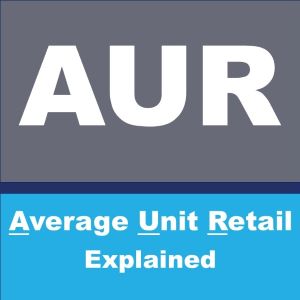Walmart holds its suppliers accountable for each link in its supply chain. Understanding and improving each piece helps keep costs down and get merchandise in the hands of customers faster.
Each step in the supply chain is critical because one weak link can result in delays, fines, and even removal from the Walmart modular. One piece of the process where supplier performance is heavily examined is the receipt of goods. As we will explore, the receipt of goods is where supplier performance is measured to make adjustments in the rest of the supply chain.
What Is Receipt of Goods?
A receipt of goods (or “goods receipt”) can have two different meanings depending on the context: 1. the physical movement of goods or materials into a warehouse or distribution center, or 2. the document required to confirm receipt of materials to the warehouse or distribution center from the supplier or manufacturer.
The Receipt of Goods Process
The standard receipt of goods process is simply verifying that the items received match what is on the purchase order. It also requires ensuring the shipment is suitable for use or resale and that all items in the shipment were delivered in good condition.
An efficient receipt of goods process is critical for retailers. It prevents unnecessary delays in the warehousing and distribution process and helps keep suppliers accountable for accurate shipments and adherence to delivery times.
A basic receipt of goods process at a warehouse, distribution center, or store might flow like this:
- The retailer issues a purchase order and requests a receipt of goods (or goods receipt).
- When the shipment arrives, the retail employee receiving the items verifies they were delivered on time, the shipment matches the purchase order, and all items are in good condition.
- If the shipment meets the requirements of the retailer, the retail employee approves the items to be accepted into the facility for storage, distribution, or sale.
- The receipt of goods is then communicated to the accounting department with the corresponding purchase order.
- The accounting department pays the invoice for the received shipment.
Types of Goods Receipts
Goods receipts contain information for planning and execution of deliveries. Some types of goods receipts include:
Purchase Order Goods Receipt
Deliveries to a retail facility are usually received with reference to a purchase order. The purchase order was issued by the retailer to the supplier or manufacturer. This document is essential in verifying the accuracy of the delivery and managing inventory.
Production Order Goods Receipt
Deliveries to a manufacturer are received with reference to a production order. The production order explains the reason for producing a product or material. The production order is essential for planning and monitoring inventory.
Other Goods Receipt
Goods receipts can be created without a purchase or production order. Some include a goods receipt pursuant to a delivery (i.e., a supplier shipping free goods to a retailer) or a simple goods receipts without reference.
Goods Receipt vs. Goods Issue
As previously illustrated, a goods receipt or receipt of goods refers to the physical inbound movement of items or materials into a warehouse, distribution center, or store. Any good receipt creates an increase of stock in the facility where it is received.
A goods issue is just the opposite. A goods issue refers to the physical outbound movement of freight or materials from the warehouse, distribution center, or store. The goods issue will result in a decrease of stock from the facility in which it was issued.
How Does ROG Work at Walmart?
Walmart has high standards for receipt of goods from its suppliers. When a shipment arrives at a Walmart facility, the company is looking for compliance in two of its programs: On Time in Full (OTIF) and Supplier Quality Excellence Program (SQEP).
- OTIF: An initiative to help improve supplier punctuality and accuracy. Under OTIF, suppliers are measured on meeting their delivery times and the accuracy of fulfilling Walmart’s purchase order. Delivery times that are early or late, as well as incomplete or incorrect orders, are all subject to monetary penalties.
- SQEP: An initiative to help improve other steps in the supply chain. In SQEP, Walmart requires specific package labeling, barcoding, invoicing, advance ship notification actions, load quality specifications, and more. Adherence to SQEP guidelines can help avoid costly penalties as well as lower costs in the supply chain.
To pay suppliers for shipments received, Walmart checks the supplier’s invoice against information collected on the receipt of goods before paying. Walmart then determines if the invoice can be paid in full, partially paid, or if fines need to be issued due to non-compliance.
Conclusion
Receipt of goods is one of many steps in the retail supply chain. Walmart holds its suppliers accountable for timeliness, accuracy, and low cost in each step.
If your company needs help working with Walmart and making positive adjustments in your process, our team can help. Request a free 15-minute consultation with an 8th & Walton advisor about your Walmart business.



